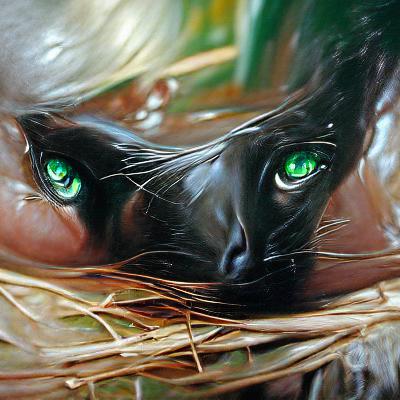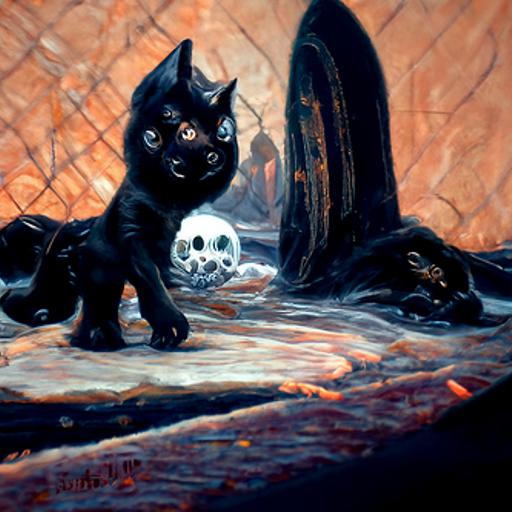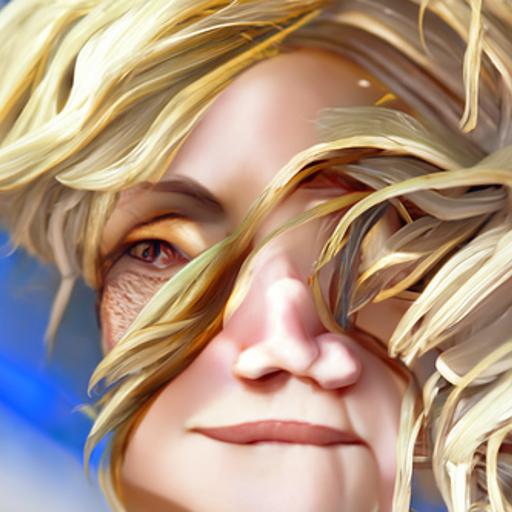The other week, I saw a fellow artist post a link on Twitter about a site called NightCafe Studio where you enter in a text prompt and it generates an image (which a lot of people mistakenly called “artificial intelligence”). Curiosity finally got the better of me, so I followed the link and began to play around with the software as an experiment. You can see the portfolio of my experimenting here on my profile at NightCafe. I’ve spent almost two weeks playing with it now, which is to say I am stepping into the concept of digital art, at least on the text-to-image side of it. (It’s so much faster than drawing or painting, and right now I feel as though I have a hundred different things going.)
The good, the bad, and the “What the ****?”
The profile/portfolio I link to over on NightCafe only includes the stuff that turned out good. I started off with a simple enough prompt, “pink flower on dark green leaves” or something very similar. If you scroll down far enough you will see the result at the very bottom. I fiddled around with a couple other phrases, and deleted those results as I did not like them. I am saving all the flower ones for their own post, but then moved on to see what kind of results I could get for some classic still life subjects.

Here is one that turned out nicely. I deleted probably half a dozen or more in my attempts to get a nice still life arrangement of tomatoes, peppers, garlic, and an onion – salsa still needing assembly. I figured it would be perfect to hang up at my favorite Mexican restaurant in town, especially since my Summer Jalapeno painting is there. Let’s just say the program is not good at doing an onion and totally ignored the prompt about garlic. So instead of a still life I could name “Salsa, Some Assembly Required,” I got red and yellow bell peppers and a single cherry tomato. It does look nice, although I will need to draw/paint what I actually wanted. I uploaded the digital piece to my Pixels shop and my RedBubble shop for accessories, apparel, and prints.
Classic still life subject seem to give the art generator fits. I have some truly wild examples of a big weak spot in the code – but I will save a few of those for the floral post since I was trying for an old masters’ style of fruit and flowers still life composition. I will mention the text-to-image program has some issues with what shape apples are supposed to be. It also doesn’t seem to realize that apples and pumpkins are affected by gravity like everything else.
A smashing success for text-to-image
On a whim, I decided to try a text prompt that would describe my very first pastel piece I did at the age of just seven. I have no idea if it still exists, but it has stayed in my mind all these years. The first result is still the best: here is Sunset Palms, with the Neo-Impressionist style filter applied to it.

The software even generated simulated impasto that looks like it was applied with a palette knife. I was a little surprised to see a swathe of green in the sky, but I think it works. I put this into Microsoft Jigsaw to play with it as a jigsaw puzzle, and the colors are just fun. Art prints are at my Pixels shop (along with puzzles) and apparel and accessories are at my RedBubble shop. I can definitely see myself painting variations of this image, either in acrylic or oil paint, once I finally get a cat-free art studio where it can dry without being walked on by my cats.
The struggle for black cats
I decided I wanted to see what kind of Halloween imagery the software could generate for me, and began to enter various prompts and try different style filters. I wanted an image of a black cat’s face filling the frame, with lovely green eyes providing a stark contrast to the black fur. Instead, the program spat out this – and I have seen hairballs that look prettier.

Well, at least it got the green eyes part right. No matter how I tilt my head and squint at it, it just does not look like a cat as I know them. This is emphatically NOT in the public portfolio, because that would just be embarrassing. Or maybe I am just not modern enough in my art sensibilities. I kept trying with the text prompts.

The title Black Cat Sitting is the text prompt I used, and in this specific case, the image it gave me was very nice! I love the soft focus feel to the light, and the cat sure enough looks like a real cat. When I saw this one, I began to think perhaps there is some hope for text-to-image software after all. Yeah, famous last words. Here is what the software thinks a black kitten ought to look like.

Yikes. That is not public anywhere else but here on the blog. Seriously – does this have five or six eyes, and why would a supposed “artificial intelligence” think kittens look like that? I mean, I know Halloween is supposed to be all about scary imagery, but this is just so many levels of wrong. And that is about as polite as I can stand for this one. I could post a few jack o’lantern mishaps, but I think y’all get the general idea of just how spectacularly wrong the algorithm can be on some of these.
Text-to-image digital art of – ME!
One day last week, I had an “Ah-ha!” moment and decided to see what kind of software-generated digital image I could get from the text prompt describing me. Hold your laughter now. I started off with the text prompt “middle-aged woman with short blonde hair,” and ended up with this:

OK, now y’all can have a good laugh. Apparently, punctuation is important, and that hyphen in middle-aged must have messed the algorithm up good and proper. Granted, there are definitely mornings when I might feel like this, but I don’t usually look quite this rough (or so my husband says). So I tried “mature woman with short blond hair,” and the second time I got an image I am now using as my “face” here on the internet.

Now, she doesn’t look like she’s about to celebrate her 50th birthday like I am, but most of the female figures the software spits out look to be no older than 25, and most look like they could be movie stars, so an image that brings to mind Florence Henderson from The Brady Bunch probably fits the program’s parameters for mature. I like the simulated brushstrokes for it as well. Her eyes are the wrong color and she isn’t wearing glasses “thick enough to see into the future,” but she’ll be my face for the internet for now.
While the text-to-image programs used to generate digital art are far from perfect, every once in a while you get a good result. I can’t see it replacing us traditional artists any time soon, but for now it is an amusing novelty. I may just use it as a way to test composition ideas or to get inspiration. Mostly, I am just playing with it because it amuses me.
